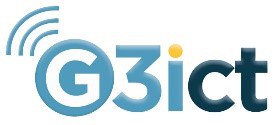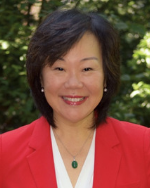25th Anniversary of the ADA Series: Disability Inclusion in the Workforce - Training & Finding Champions
Posted on April 21, 2015

CEO and Founder, Ruh Global IMPACT and Chair, G3ict Employability and Technology Group
Training will save an organization a lot of time and effort as well as reduce risks. Disability inclusion should be integrated into all corporate training, writes Debra Ruh.

Training (Leadership, Management and Enterprise-wide): All training material should be easily accessible, including the presentations, documentation and training sessions. While planning for online training or an eLearning course, every aspect of the training, including the launch, learning management system, testing functions, and feedback and support should be accessible.
If the training is instructor-led, then the materials, presentations and handouts, as well as physical access to the classroom needs to made accessible. Provision for accommodations to the participants should also be made, if needed.
Once a client contacted my firm because they had rolled out a new management program across their corporation but had forgotten to make it accessible and several managers who were visually impaired could not take the course. The company was anxious about their risk exposure but we made the course accessible with minimal effort and the managers were able to complete the coursework successfully.
Find a Champion: Finding champions within an organization is a critical piece of the puzzle. The best way to accomplish this is to find leaders at all levels that have been impacted by disability. When a firm has the executive leadership ‘buy-in,’ it increases awareness, creates positive expectations and enhances the commitment of recruiting, hiring, retention, and advancement of persons with disabilities. The outcome of successful leadership will be that corporate commitment is pervasive and last much longer than the terms of office of one or two “leaders” that currently support its commitment.
Here are some ideas for securing champions:
- Establish and sustain a corporate-wide culture of inclusion. Be sure to focus on securing leadership at the highest level of the business to secure ‘buy-in’ across your workforce; it’s essential to include the company’s board of directors and C-Suite. Getting executive leaders to talk about the value of including persons with disabilities is a good place to start. Anytime leaders talk about their commitment to a diverse workforce, it is critical that inclusion be part of the conversation.
- Embed engagement champions throughout your organization. Identifying the right leaders as your disability inclusion champions is key to building a culture of inclusion. Failure to do so will severely hamper your efforts to fully include persons with disabilities.
- Use Employee Resource Groups and other committees to bring together a group of engaged connectors so as to help give the initiative some traction. Remember to support the groups by providing them a budget, a voice at the leadership table and a plan of action that includes deliverables, timelines and metrics.
- Send your disability inclusion champions to a conference or trade show like USBLN National Conference or the M-Enabling Summit to speak about your efforts, and possibly present a technical paper or work at a corporate booth. Even if they're not marketing types, they'll be great brand ambassadors, representing you to your customers and other stakeholders.
- Invite your disability inclusion champions to participate in your college recruiting program or at job fairs. These standouts can act as brand ambassadors to candidates with disabilities in much the same way they can to customers. Also, invite them to mentor new hires or those who have been promoted. This is especially helpful when you let employees with disabilities mentor new hires with disabilities.
- Reward your disability inclusion champions with development programs. These programs are frequently offered at disability associations and major universities. Also, ask the Champions to present and participate in executive leadership team meetings.
The United States has made positive strides as we move closer to the 25th Year Anniversary of the ADA. There is still a lot of work to do to effectively include and retain individuals with disabilities in the workforce.























